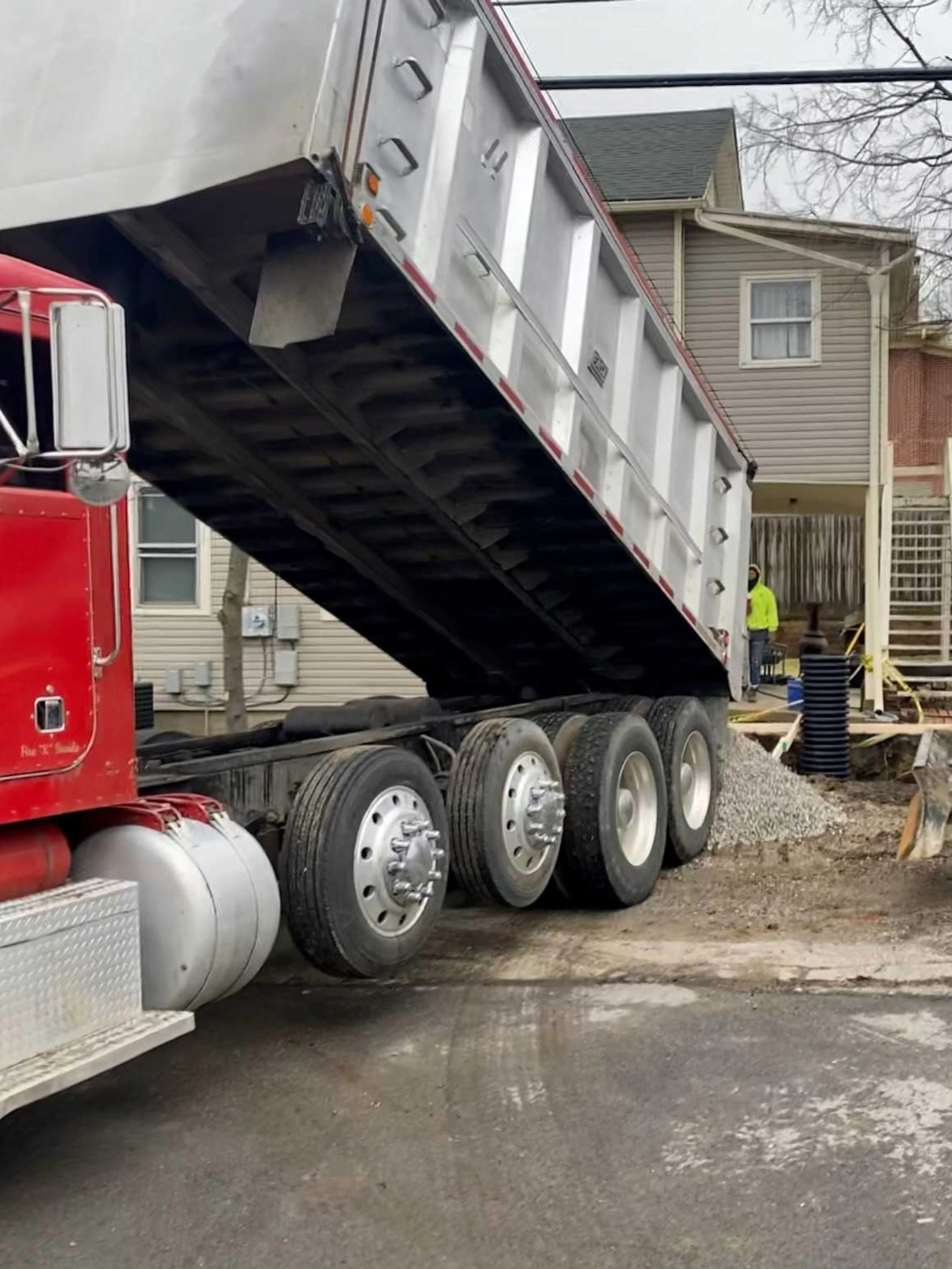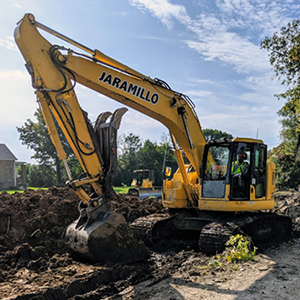Commercial Lancaster Trenching - Trenching Providers for Companies in Lancaster
Commercial Lancaster Trenching - Trenching Providers for Companies in Lancaster
Blog Article
Unveiling the Art of Excavation: Pro Tips for Safe and Effective Digging
As soil is turned and earth is relocated, the complexities of excavation disclose themselves, demanding a keen understanding of tools, soil structure, safety methods, and ecological factors to consider. The expertise needed to navigate these components efficiently can suggest the difference in between an effective excavation project and a prospective catastrophe.
Importance of Correct Tools
To make sure the safety and efficiency of any type of excavation project, utilizing the proper tools is extremely important. The right devices not only improve productivity however also minimize dangers connected with excavating. Excavation projects differ in extent and complexity, varying from small domestic landscaping jobs to large construction undertakings. No matter the job dimension, having the correct devices can make a considerable difference in the result.
These flexible machines come in different sizes to fit various project demands. Mini excavators are optimal for smaller tasks, while bigger excavators deal with a lot more extensive tasks efficiently.
Aside from excavators, various other critical devices includes dump excavators, vehicles, and trenchers. Discard trucks are crucial for removing and carrying excavated products, while plates are utilized for excavating deep and narrow trenches. Bulldozers master jobs that need pushing big amounts of dirt or particles. By investing in the ideal tools, excavation projects can be completed safely, promptly, and with accuracy.
Recognizing Soil Composition
A detailed understanding of dirt structure is essential for implementing excavation tasks with accuracy and security. Comprehending the different sorts of soil is important as it straight impacts excavation approaches, equipment option, and general task effectiveness. Soil composition generally contains four major elements: sand, silt, clay, and raw material. Each component has unique properties that influence how dirt responds to excavation procedures.
Sand bits are the largest and supply excellent water drainage yet offer little communication. Silt bits are smaller sized than sand however bigger than clay, using modest water drainage and communication. Clay fragments are the tiniest and provide high cohesion but poor drainage. Raw material, such as decomposing plant material, influences dirt fertility and security.
Before beginning excavation, performing dirt tests to determine its composition and features is crucial. This details aids in picking the ideal equipment, executing safety procedures, and developing excavation approaches customized to the particular soil conditions - lancaster excavation. By recognizing soil make-up, excavation experts can improve task results while making sure safety and security and adherence to finest practices
Precaution and Methods
Recognizing dirt structure is the foundation whereupon precaution and procedures for excavation tasks are built, making sure the wellness of workers and the success of the venture. When it comes to safety and security throughout excavation, there are a number of key steps that must be carried out to reduce dangers and stop accidents.
Most importantly, prior to any kind of digging begins, an extensive inspection of the site must be performed to recognize any type of prospective dangers such as underground energies, unstable soil problems, or nearby frameworks that could posture a risk. It is crucial to have an experienced individual look after the excavation process to make sure that all safety and security procedures are adhered to purely.
Moreover, all workers included in the excavation needs to be properly educated in risk-free digging practices and the appropriate procedure of tools. By sticking to these safety and security steps and procedures, excavation jobs can be finished successfully and without occurrence.
Efficient Excavation Preparation
When beginning on an excavation task, meticulous preparation is vital to ensure performance, safety, and effective end results. Effective excavation planning involves a number of crucial actions that are essential for the smooth execution of the project.
As soon as the site analysis is full, the next step is to produce a clear timeline and schedule for the excavation activities. This includes identifying the series of jobs, devices demands, and manpower allowance. Proper scheduling aids prevent go to this website delays and makes certain that the job remains on track.

Additionally, communication among all staff member is extremely important throughout the planning phase. Clear directives, normal updates, and reliable sychronisation are vital for an effective excavation job. By spending time and effort in precise planning, excavation teams can considerably enhance performance, minimize risks, and attain effective outcomes.

Managing Ecological Considerations
With increasing emphasis on environmental sustainability in building and construction methods, handling environmental considerations has actually become an important element of excavation projects. Excavation activities have the potential to impact the surrounding environment through dirt disintegration, blog here debris drainage, environment interruption, and contamination of water resources. To alleviate these risks, it is necessary to carry out best practices that prioritize environmental management.

In addition, proper waste administration is essential to stop dirt and water contamination. Executing procedures for the disposal of dangerous materials, recycling of waste materials, and lessening making use of harmful chemicals can dramatically reduce the environmental influence of excavation jobs. By incorporating these methods right into excavation planning and execution, building firms can make sure that their tasks are not just safe and productive but likewise eco accountable.
Conclusion
To conclude, grasping the art of excavation requires a thorough understanding of appropriate devices, dirt structure, precaution, and reliable preparation. By complying with these standards and taking into consideration environmental factors, excavations can be performed securely and successfully. It is essential to prioritize security and productivity in every digging job to ensure effective outcomes.
As dirt is turned and planet is moved, the details of excavation reveal themselves, demanding an eager understanding of tools, soil structure, security methods, and environmental factors to check this consider.To make sure the safety and security and performance of any type of excavation task, making use of the ideal devices is extremely important.A comprehensive understanding of soil structure is fundamental for carrying out excavation tasks with accuracy and safety and security. Understanding the different types of dirt is essential as it directly affects excavation techniques, tools choice, and total project performance. By understanding dirt make-up, excavation experts can boost project results while ensuring safety and security and adherence to ideal practices.
Report this page